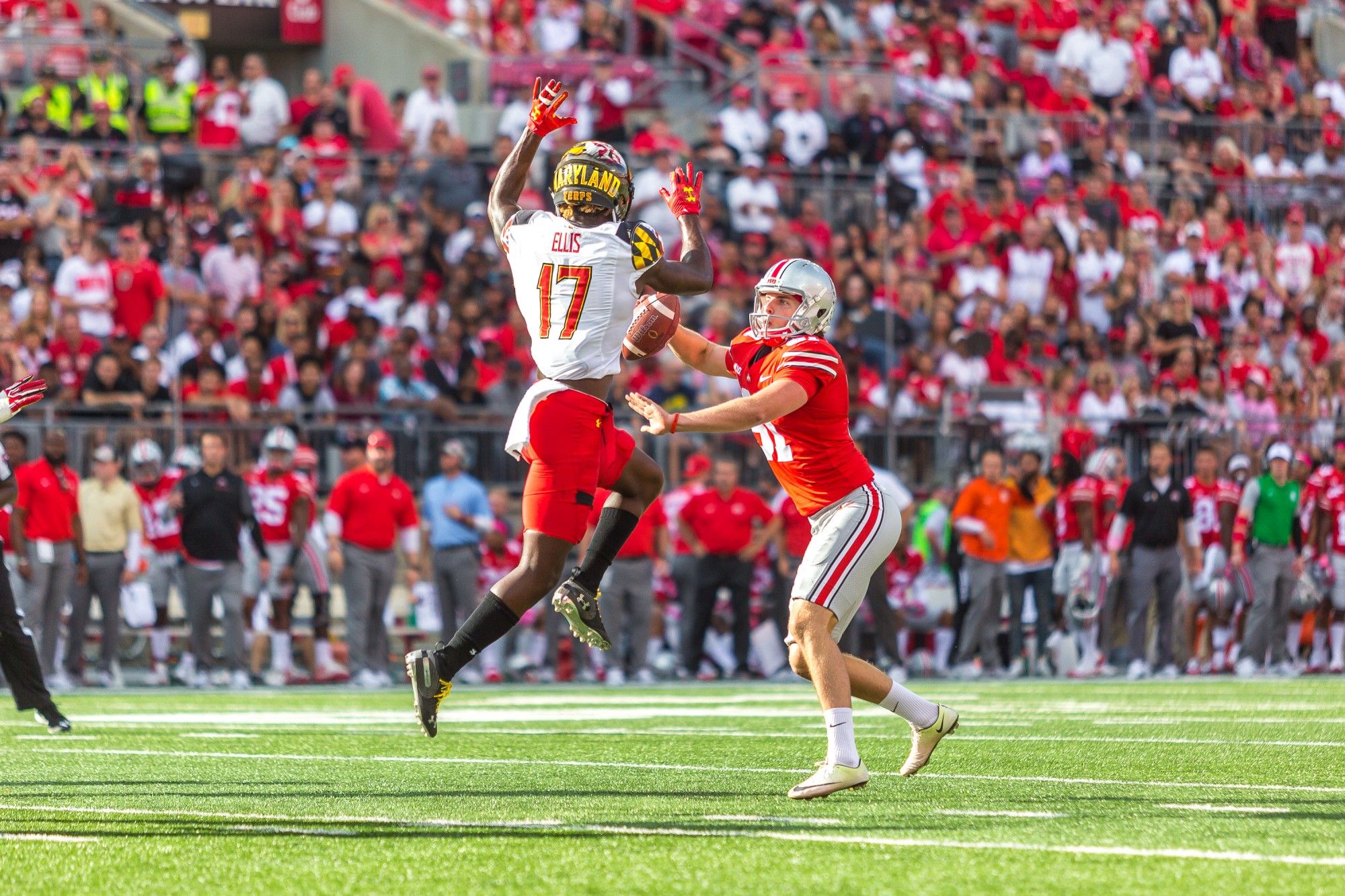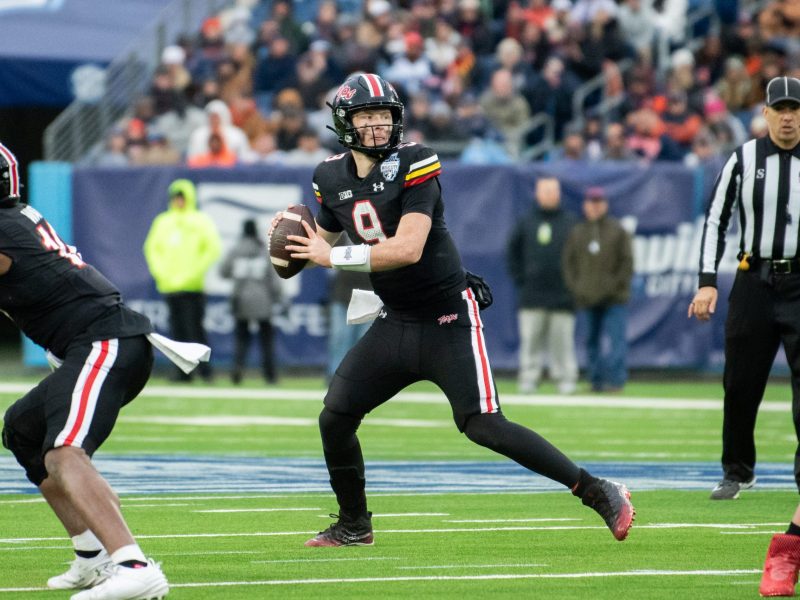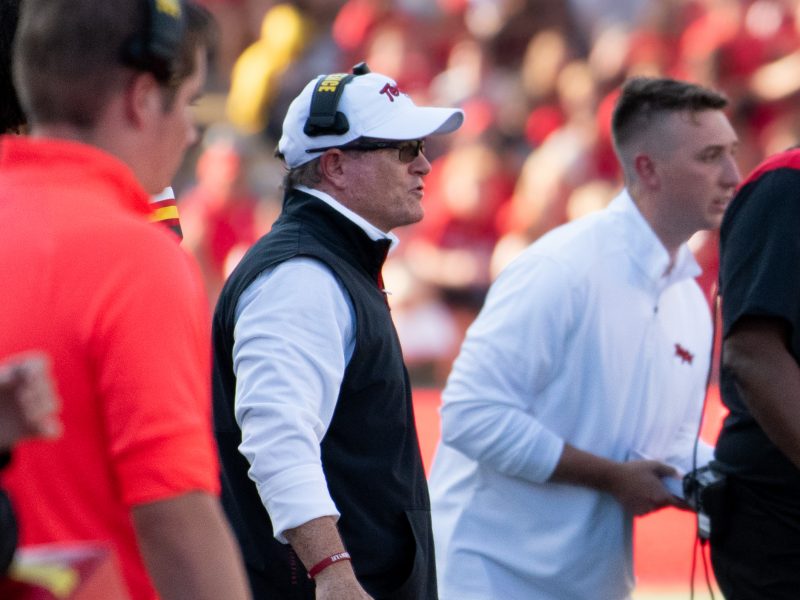After failing to beat Indiana last week, the 5-5 Maryland Terrapins face an uphill battle to become bowl eligible. The Terps’ final home game of the season comes against No. 10 Ohio State, who enters Saturday’s affair with a 9-1 record.
Before the game, we caught up with Colin Gay of The Lantern to learn a bit more about the Buckeyes. Our conversation has been lightly edited for clarity.
1. Ohio State has had a very inconsistent defense this year. What has been the difference between the good performances and the bad performances?
The main aspect of the success of the Ohio State defense comes down to one thing: not allowing big plays.
Through the first eight games of the season, the Buckeyes allowed 26 plays of 30 yards or more. Some of these plays were caused just by the success of the offense: an acrobatic catch by Penn State’s Juwan Johnson or a double-reverse pass from Minnesota quarterback Zack Annexstad to tight end Bryce Witham.
But many of the plays showed areas of concern for the defense as a whole. It showed safeties taking bad angles on tackles, allowing receivers and running backs to dash past them into empty space. It showed a lack of identity on the outside, as opponents tested the cornerbacks one-on-one, who are continuing to try and master the concept of a press man defense. Those problems have been consistent throughout the season, coming to a peak in the 49-20 loss to Purdue.
2. Former Maryland commit Dwayne Haskins leads the Big Ten in passing yards, touchdowns, and passer rating. How has he grown as a player in his first year as a starter?
Dwayne Haskins came out and quickly established who he was as a quarterback. In his first start of the season against Oregon State, he completed 73.3 percent of his passes for 313 yards and five touchdowns with one interception. He continued that trend, completing over 80 percent of his passes against Rutgers and Tulane, throwing for over 400 yards in three straight games against Indiana, Minnesota and Purdue respectively. That’s who he is: a pass-first quarterback with high accuracy, something Ohio State has not had in a while.
After the bye week, Ohio State has tried to get back to its balanced offensive attack, relying on running backs Mike Weber and J.K. Dobbins more against Nebraska. However, in the Michigan State game, something seemed off. Haskins completed 61.5 percent of his passes, below his season average, for 227 yards and one touchdown. He has become the offense for Ohio State, turning the Buckeyes into more of a pro-style offense head coach Urban Meyer may not be as used to. But, with his performance early in the season, he defined what the Ohio State offense would be.
3. The Ohio State rushing attack is spearheaded by J.K. Dobbins and Mike Weber, with both having just over 700 yards on the season. What different things do both of them bring to the table, and how do they complement the other?
That’s a misconception many people have. Mike Weber and J.K. Dobbins are viewed in different ways, with Dobbins viewed more as the shifty back utilized in the passing game and Weber as the goal line, bruising back.
However, both backs are the same size, both at 5-foot-10, 214 pounds. Both backs have carried the ball pretty equally throughout the season, with Dobbins leading the team with 157 carries. But that is something Ohio State has pride in, in its ability to switch which back is in each drive and to still have the same production out of each. However, Ohio State is nowhere near where it was last year in terms of a rush offense. This season, the Buckeyes are No. 7 in the Big Ten, averaging 172.3 yards per game and 4.3 yards per carry. That also comes with a lack of a running threat at quarterback. It shows the Ohio State offense is changing, but still utilizing its running game, especially over the past two games against Nebraska and Michigan State.
4. Ohio State suffered a shocking 49-20 loss to Purdue a few weeks ago. In the two games since, how has the team fixed what went wrong in that game, and what do they still need to work on?
Offensively, it was a lot to do with the one-dimensional offense Ohio State was running. Without much success on the ground against the Boilermakers, averaging three yards per carry with no touchdowns, Haskins took matters into his own hands, breaking the records for completions (49), pass attempts (73) and passing yards (470) in a single game. With those numbers, Ohio State could not get a passing offense going, especially when it came to within the 20-yard line. So, after the bye week, Ohio State has focused more on the run game, as I said above. Ohio State rushed the ball 40 times against Nebraska, averaging 5.7 yards per carry and recording three touchdowns. This is still a work in progress, as the Buckeyes saw against Michigan State. Defensively, it’s defending the pass, finding the balance between press-man coverage and zone defense, not allowing receivers, like Purdue’s Rondale Moore in the slot, to beat the defense over and over.
5. Ohio State wins if…
Ohio State wins if it realizes what’s at stake. After wins over Nebraska and then-No. 18 Michigan State, the Buckeyes have not budged from its No. 10 position in the College Football Playoff rankings. The committee seems to want to see a dominant performance out of Ohio State before it moves up. To do that, to pass the “eye test” for the committee, Haskins and the running game will have to find that balance, but put up impressive numbers in both the passing and running game. Defensively, consistent pressure in the rush will be key, forcing Tyrrell Pigrome and one of the running backs Maryland has into the backfield and limit production in the running game. Ohio State will also have to force Maryland to throw, showing pressure in the pass rush as well.
6. Maryland wins if…
Maryland will win if they take advantage of Ohio State’s struggles on defense, adding to the list of big plays the defense has allowed this year, whether it’s in the running game or through the air. Also, the Terrapins will win if they can force Ohio State to be one-dimensional, taking away the running game or the passing game for the Buckeyes.



